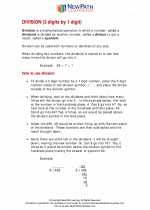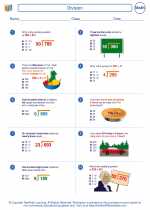Solution in Mathematics
In mathematics, a solution is the value or values that satisfy an equation or inequality. When we solve an equation or inequality, we are looking for the solution or solutions that make the statement true.
Types of Solutions
There are different types of solutions based on the type of equation or inequality being solved:
- One Solution: An equation has one solution when there is only one value that makes the equation true.
- No Solution: An equation has no solution when there is no value that makes the equation true.
- Infinitely Many Solutions: An equation has infinitely many solutions when any value of the variable makes the equation true. This often occurs in the case of identities or equations where the variable can be eliminated.
Finding Solutions
There are various methods to find solutions to equations and inequalities:
- Algebraic Methods: This involves using algebraic techniques such as simplifying, factoring, and isolating the variable to find the solution.
- Graphical Methods: Graphing the equation or inequality on a coordinate plane and identifying the points of intersection with the x-axis to find solutions.
- Numeric Methods: Using numerical methods such as trial and error, or using a calculator to approximate solutions.
Study Guide
When studying solutions in mathematics, it's important to:
- Understand the different types of solutions and how to recognize them.
- Practice solving equations and inequalities using algebraic, graphical, and numeric methods.
- Master the techniques for finding solutions, such as isolating the variable or graphing the equation.
- Review the properties of equations and inequalities to determine the number of solutions.
[Solution] Related Worksheets and Study Guides:
.◂Math Worksheets and Study Guides Sixth Grade. Division
Study Guide Division
Division  Worksheet/Answer key
Worksheet/Answer key Division
Division  Worksheet/Answer key
Worksheet/Answer key Division
Division  Worksheet/Answer key
Worksheet/Answer key Division
Division 

 Worksheet/Answer key
Worksheet/Answer key
 Worksheet/Answer key
Worksheet/Answer key
 Worksheet/Answer key
Worksheet/Answer key

The resources above cover the following skills:
Connections to the Grade 6 Focal Points (NCTM)
Number and Operations: Students' work in dividing fractions shows them that they can express the result of dividing two whole numbers as a fraction (viewed as parts of a whole). Students then extend their work in grade 5 with division of whole numbers to give mixed number and decimal solutions to division problems with whole numbers. They recognize that ratio tables not only derive from rows in the multiplication table but also connect with equivalent fractions. Students distinguish multiplicative comparisons from additive comparisons.